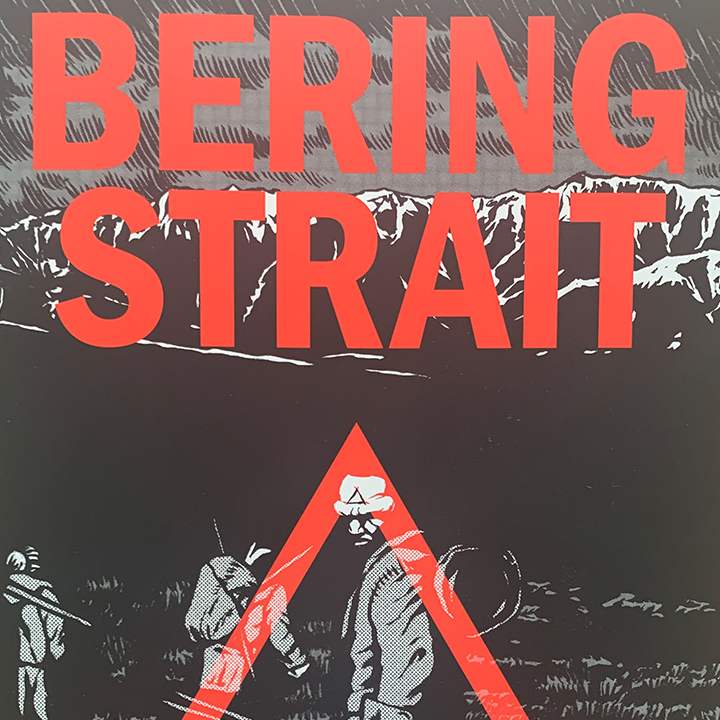Bering Strait by Tom Manning
Human beings prefer the progressive linear narrative. We like to tell ourselves stories where events start at a single origin point and progress towards their present, evolved endpoint. For many years in popular culture, people discussed the search for the missing link, trying to find the neat linear progression that lead from primates to humans. Yet what we have been discovering is that the truth, as always, is a lot messier. Many competing species existed, turning our notion of a straight line into a bramble of forked paths. In fact, researchers now believe that as many as eight other human species existed alongside homo sapiens. And homo sapiens may have not been “better,” just better adapted. Maybe they were better adapted to disease or cold. Or maybe they were just more willing to kill those that looked like them.
Tom Manning’s graphic novel Bering Strait dramatizes this moment when several human species existed alongside one another. This is a unique and fascinating setting, but Manning’s concerns are much more philosophical. He weaves a story about belief systems and how these systems help us deal with conflict, either by grounding us in reality or by providing us with a grand narrative that explains away our doubts. Personally, I found this incredibly fresh and intriguing, though I can see how readers with less of a philosophical bent may not get into these ideas. However, the book gives the reader a solid plot and large, dark full-bleed pages full of animals and geography.

I had never seen Manning’s art before reading Bering Strait and initially it reminded me of Atsushi Kaneko’s work in the manga Soil in the thickness of the line work and some of the mask design. As I mentioned, Manning designs large, black full-bleed pages that create an oppressive atmosphere that helps to reinforce the mood of the book.
There is a mystery in the book that is never fully explained. I don’t want to be more specific than that, but I think Manning’s choice not to explain everything is probably a good one. The explanation would have taken the story in a direction that would have distracted from the idealogical themes that provide the core meaning of the work. In other words, Manning takes us where he wants us to go while hinting at a larger reality. To me, that is the mark of a mature artist.
This book surprised me and I recommend it highly.
You can order the book directly from Tom Manning here.

I picked this up due to a recommendation by Colin Blanchette on Twitter.


